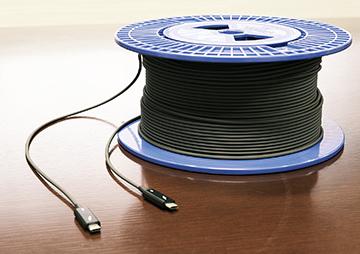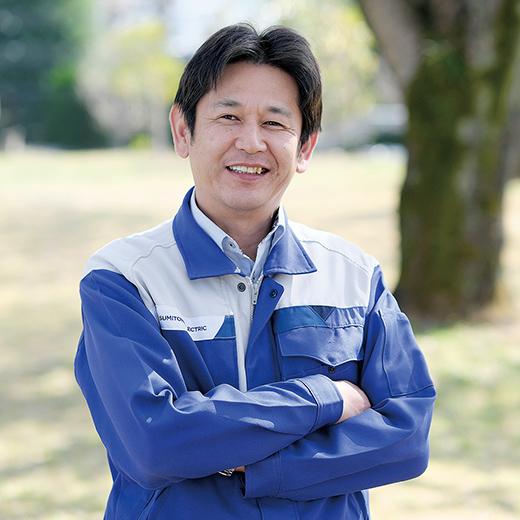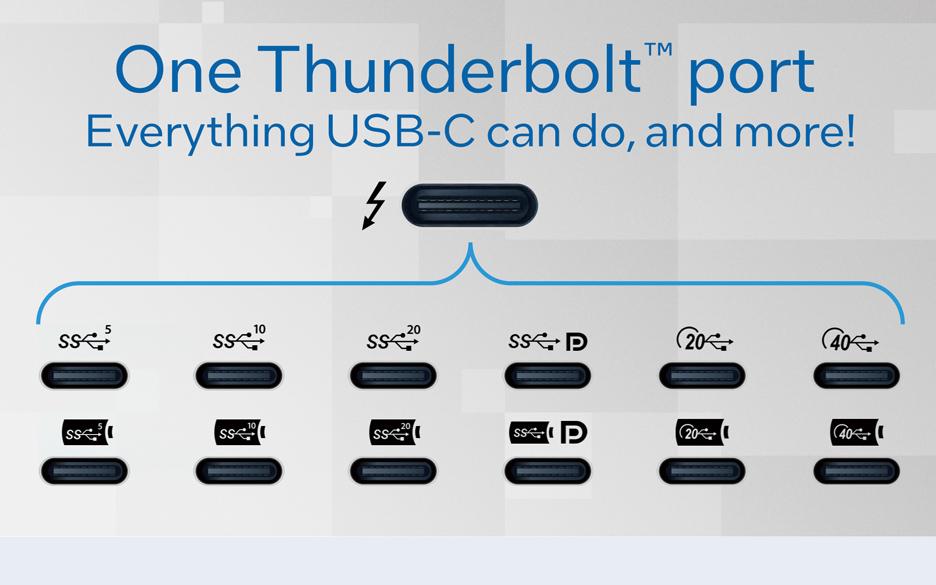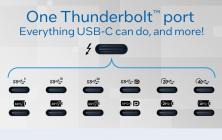
A Single Interface for Power Supply, Data Transfer, and Video Display
Thunderbolt™ 5 cable
Improvement of Data Transmission Speeds to 80 Gbps

Thunderbolt™ is a standard for highspeed, general-purpose data transmission between PCs and peripheral equipment such as external displays and storage devices. It features the use of a single interface to enable the three functions of power supply, data transfer, and video display.
Thunderbolt™ was first released in 2011 with a maximum transmission speed of 10 Gbps. That rate was twice as fast as USB3.0 at the time. Subsequent versions achieved even higher speeds: Thunderbolt™ 2 came out in 2013 and offered 20 Gbps; Thunderbolt™ 3 (in 2015) and the USB4-compliant Thunderbolt™ 4 (in 2020) delivered 40 Gbps speed. The upcoming Thunderbolt™ 5 achieves 80 Gbps. What such higher bandwidth allows, for example, is for gamers to enjoy smoother motion and lower latency, and for creators to quickly back up large video and photo files while working on multiple displays. With these features, Thunderbolt™ provides strong support for improving digital work performance, including games and video production.
Currently, three kinds of cables are in use: passive copper (electrical) cables that transmit signals directly for short lengths of around 1 m, active copper cables equipped with circuits that reduce signal attenuation for lengths over 1 m, and active optical cables that can transmit signals over a distance from 3 m to a maximum of 50 m.
Flexible Cables for High-Speed Communication

The company responsible for developing and manufacturing Thunderbolt™ cables is Sumitomo (SEI) Electronic Wire, Inc. (hereafter “SElW”), a member of the Sumitomo Electric Group. For many years, the company has developed and manufactured electrical wires for electronic and information devices, and is especially well regarded for its micro-assembly technology. Hiroyuki Semba has been involved in the development of Thunderbolt™ cables since the early days.
“One of the features required of Thunderbolt™ is high-speed transmission. The cables that were mainstream for high-speed transmission at the time were twistedpair cables, which were made of twisted pairs of wires, and had issues with being stiff and difficult to use. As an alternative, we proposed a microcoaxial cable to Intel. Its biggest advantage is that it enables high-speed communication while being flexible. The design was approved, so the development and manufacturing were entrusted to our company.” (Semba)
The Cable Assembly Department, led by Semba, was tasked with maintaining the cable's characteristics through optimal processing. To meet the challenge, SEIW made full use of the micro-assembly technology that the company had developed over the years.
“Since the launch, other suppliers have received Intel's approval and have entered the Thunderbolt™ market. To maintain our advantage, I believe it is important to hone the fundamentals of development and manufacturing: quality (Q), cost (C), and delivery (D).” (Semba)
NEXT
The Inside Story of the Development of Thunderbolt™
- Sumitomo Electric's comprehensive strength in responding to Intel's requests –
Registration of public notification
If you register your e-mail address, we will notify you when the latest issue is published. If you wish, please register from the registration form.
To delete your registration, please visit here.






